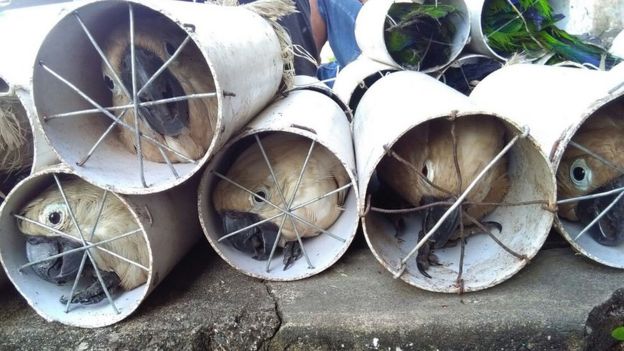Soundscapes are allowing
researchers to understand the spread and diversity of birds on Japanese island
Date: November 6, 2017
Source: Springer
Ecologists are using a network of
"outdoor recording studios" to better monitor the subtropical
Japanese island of Okinawa. Now a pilot study, in which more than 1,100 hours
of birdsong were analyzed, is available in the journal Ecological
Research which is the official journal of the Ecological Society of Japan
and is published by Springer.
The research was led by both Nick
Friedman of the Okinawa Institute of Science and Technology in Japan, and
Samuel Ross of the University of Leeds in the UK. The soundscapes they analyzed
reflect how human activity influences the occurrence of species such as the
Okinawa Rail and Ruddy Kingfisher on the island.
In this acoustic monitoring
study, five pilot recording sites were set up in three city parks, a forest and
a forested suburb on Okinawa, which is the largest and most inhabited island in
the Ryūkyū archipelago. Together with nineteen other sites, these are part of
the Okinawa Environmental Observation Network Churamori Project which monitors
the island's plants and animals -- many of which are either endemic or
threatened.
Indices from the recordings were
calculated to reflect aspects such as the composition and complexity of the
soundscape. The range of frequencies of the bird song were monitored as well as
different sound intensities within a recording, as an indication of the
diversity of birds present in an area.
The presence of five different
bird species were also automatically detected using machine learning methods.
The Okinawa Rail and Ruddy Kingfisher were, for example, most often heard in
forested areas. This reflects the impact that urban development is having on
the location of endemic species.
The research team recorded the
influence that rainy weather and seasonal changes have on birdsong and the
soundscape in general. They also learned when to start listening for different
bird species. The Ruddy Kingfisher's song is, for instance, almost exclusively
heard during the morning, while the Jungle Crow is audible throughout the day.
The Okinawa Rail is the most silent.
